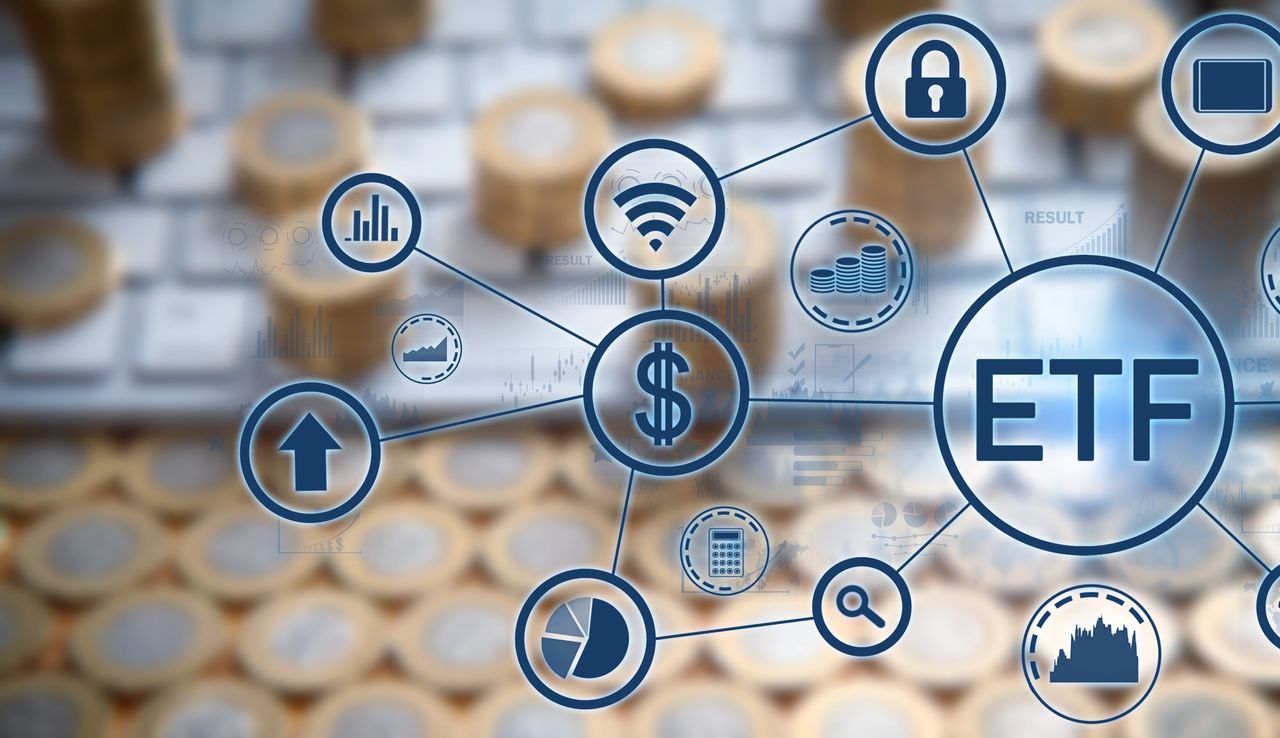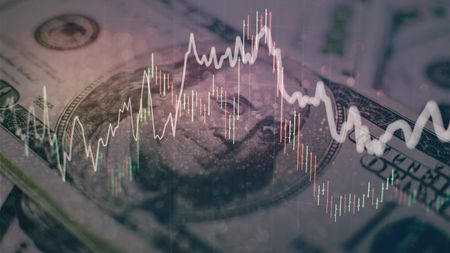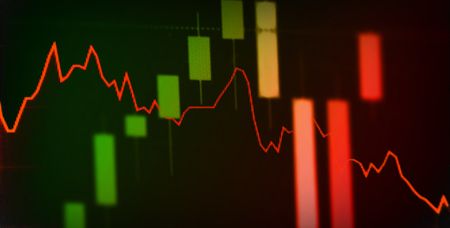3 ETFs for the Trump Presidency
Stock market volatility has picked up since Inauguration Day. These ETFs can help investors can navigate the ups and down of the second Trump era.


President Donald Trump wasted no time getting to work post-inauguration. Between January 20 and March 18, he signed a total of 93 executive orders. Many of these focus on his administration's aggressive cost-cutting measures under the newly created Department of Government Efficiency (DOGE), while others impact energy, healthcare, the rollback of diversity, equity, and inclusion (DEI) initiatives and, of course, tariffs.
While not all of these are relevant to markets, some certainly are – and investors clearly agree. Just take a look at the Cboe Volatility Index, or VIX, which surged nearly 20% in February. And in mid-March, the VIX hit its highest level since the August stock market crash.
Often referred to as Wall Street's "fear gauge," the VIX measures expected volatility in the S&P 500 based on options pricing. When uncertainty spikes – whether due to economic concerns, geopolitical events or shifting policy out of Washington – so does the VIX, signaling heightened investor anxiety.

Sign up for Kiplinger’s Free E-Newsletters
Profit and prosper with the best of expert advice on investing, taxes, retirement, personal finance and more - straight to your e-mail.
Profit and prosper with the best of expert advice - straight to your e-mail.
That said, uncertainty doesn't have to mean losses. There are many ways to position a portfolio to manage volatility and even capitalize on it.
Exchange-traded funds (ETFs) provide a convenient way for investors to diversify risk from a second Trump presidency while helping them stay the course. Here's a look at three of the best ETFs for investors to consider.
Harvest higher volatility with covered calls
One highly popular actively managed ETF benefiting from market volatility is the JPMorgan Equity Premium Income ETF (JEPI), which has amassed $39 billion in assets under management.
JEPI's strategy is twofold. First, it selects a subset of S&P 500 stocks with historically lower volatility, aiming to provide a smoother return profile than the broader index.
Second, it enhances income by selling covered calls on the S&P 500 through equity-linked notes (ELNs), which is where heightened volatility comes into play.
Covered calls work by selling the future upside of an asset or index in exchange for an immediate cash premium. The value of this premium depends on several factors, including the time remaining until the call expires, how far the strike price is from the market price, and – critically – the volatility of the underlying asset.
Higher volatility increases option premiums, meaning that in turbulent markets, JEPI's covered call overlay tends to generate more income.
Even better, if markets remain rangebound due to ongoing Trump-related uncertainty and lofty valuations, it bodes well for covered call strategies.
These approaches tend to outperform when stocks trade sideways because they keep collecting premium income without sacrificing as much upside as they would in a strong bull market.
Right now, JEPI is yielding 7.2% on a 30-day SEC basis, with monthly distributions. Despite being actively managed, it remains relatively affordable with a 0.35% expense ratio.
Learn more about JEPI at the J.P. Morgan provider site.
Mitigate sector concentration with equal weighting
The current composition of the S&P 500 Index is heavily skewed, with a roughly 32% allocation to tech stocks. This concentration is the result of the S&P 500's market-cap weighting, where the largest companies receive the highest weightings, combined with a decade of outperformance by technology giants.
For better or worse, Big Tech is now firmly in Washington, D.C.'s crosshairs. Several high-profile tech leaders – including former Amazon (AMZN) CEO Jeff Bezos, Meta Platforms (META) CEO Mark Zuckerberg, Alphabet (GOOGL) CEO Sundar Pichai and Tesla (TSLA) CEO Elon Musk – attended Trump's inauguration, but there's no telling what policies may emerge in the coming years.
Some of these firms have already faced antitrust lawsuits, and regulatory scrutiny could increase further under the current administration should Trump's whims change.
One way to reduce concentration risk while still investing in the S&P 500's basket of stocks is through the Invesco S&P 500 Equal Weight ETF (RSP).
Unlike traditional S&P 500 ETFs that assign higher weightings to the biggest companies, RSP gives each stock an equal 0.2% allocation at periodic rebalances. This prevents any single sector – especially technology – from dominating the portfolio.
While RSP carries a higher expense ratio of 0.2% compared to the lowest-cost S&P 500 ETFs, it has still delivered strong performance. Since its inception in April 2003, RSP has generated an annualized total return (price change plus dividends) of 11.1% – outpacing the S&P 500's 10.4% return.
Learn more about RSP at the Invesco provider site.
Stay the course with low-cost global diversification
Donald Trump is not the first president – and won't be the last – to shake up markets with policy decisions. Past administrations have implemented drastic measures that initially spooked investors, only for the global economy to continue its upward trajectory.
George W. Bush's invasion of Iraq in 2003 led to surging oil prices and geopolitical uncertainty. Barack Obama's Dodd-Frank Act in 2010 introduced sweeping financial regulations that many feared would stifle economic growth.
Yet, in each case, markets adapted, and long-term investors were rewarded for staying the course. Despite short-term volatility, the global stock market has a long history of resilience.
Regardless of U.S. policy shifts, companies worldwide will continue to generate earnings, buy back shares, reinvest in growth and pay dividends. The long-term trend remains intact.
Sometimes, the best move is inaction. Investors who hold a broad global ETF like the Vanguard Total World Stock ETF (VT) – which holds over 9,800 stocks from both developed and emerging markets for a 0.06% expense ratio – might be best served by simply staying patient and tuning out the noise.
If your investment thesis is that the global economy will continue growing over the next several decades, then it shouldn't matter whether the next dominant player is the U.S., China or another country. Long-term investing is about staying the course, regardless of who occupies the White House.
Learn more about VT at the Vanguard provider site.
Related content
Get Kiplinger Today newsletter — free
Profit and prosper with the best of Kiplinger's advice on investing, taxes, retirement, personal finance and much more. Delivered daily. Enter your email in the box and click Sign Me Up.
Tony started investing during the 2017 marijuana stock bubble. After incurring some hilarious losses on various poor stock picks, he now adheres to Bogleheads-style passive investing strategies using index ETFs. Tony graduated in 2023 from Columbia University with a Master's degree in risk management. He holds the Certified ETF Advisor (CETF®) designation from The ETF Institute. Tony's work has also appeared in U.S. News & World Report, USA Today, ETF Central, The Motley Fool, TheStreet, and Benzinga. He is the founder of ETF Portfolio Blueprint.
-
 Can a New Manager Cure Vanguard Health Care Fund?
Can a New Manager Cure Vanguard Health Care Fund?Vanguard Health Care Fund has assets of $40.5 billion but has been ailing in recent years. With a new manager in charge, what's the prognosis?
By Nellie S. Huang Published
-
 Retirement Savings On Track? How Much Should You Have Between 61 and 65
Retirement Savings On Track? How Much Should You Have Between 61 and 65JPMorgan’s guide can help baby boomers determine whether they have saved enough for a retirement pegged to their income level.
By Donna Fuscaldo Published
-
 Can a New Manager Cure Vanguard Health Care Fund?
Can a New Manager Cure Vanguard Health Care Fund?Vanguard Health Care Fund has assets of $40.5 billion but has been ailing in recent years. With a new manager in charge, what's the prognosis?
By Nellie S. Huang Published
-
 What You Don't Know About Annuities Can Hurt You
What You Don't Know About Annuities Can Hurt YouLack of awareness leads many to overlook these potent financial tools, and with the possibility of running out of money in retirement, that could really hurt.
By Ken Nuss Published
-
 Three Keys to Logical Investing When Markets Are Volatile
Three Keys to Logical Investing When Markets Are VolatileFocusing on these market fundamentals can help investors stay grounded rather than being swayed by emotion or market hysteria.
By Dennis D. Coughlin, CFP, AIF Published
-
 Yes, the Markets Are Spooked, But You Don't Have to Be
Yes, the Markets Are Spooked, But You Don't Have to BeIt's human nature for investors to freak out in a downturn. But with a little discipline, you can overcome the urge to sell and stay focused on long-term goals.
By Jimmy Lee, IAR Published
-
 Remembering Bogle: A New Standard for Municipal Investing
Remembering Bogle: A New Standard for Municipal InvestingImprovements in technology, data, systematic trading and risk analytics have led to more successful municipal indexing.
By Paul Malloy Published
-
 Stock Market Today: Stocks Are Mixed Before Liberation Day
Stock Market Today: Stocks Are Mixed Before Liberation DayMarkets are getting into the freewheeling rhythm of a second Trump administration.
By David Dittman Published
-
 How to Invest in Sports
How to Invest in SportsIf it's springtime, Forbes is out with its annual list of baseball franchise values. The billions involved might make you wonder how to invest in sports.
By David Dittman Published
-
 Winning Strategies for Financial Advisers as Clients' Lives Evolve
Winning Strategies for Financial Advisers as Clients' Lives EvolveHow can the wealth management industry help make life transitions easier for the adviser and the client?
By David Conti, CPRC Published
